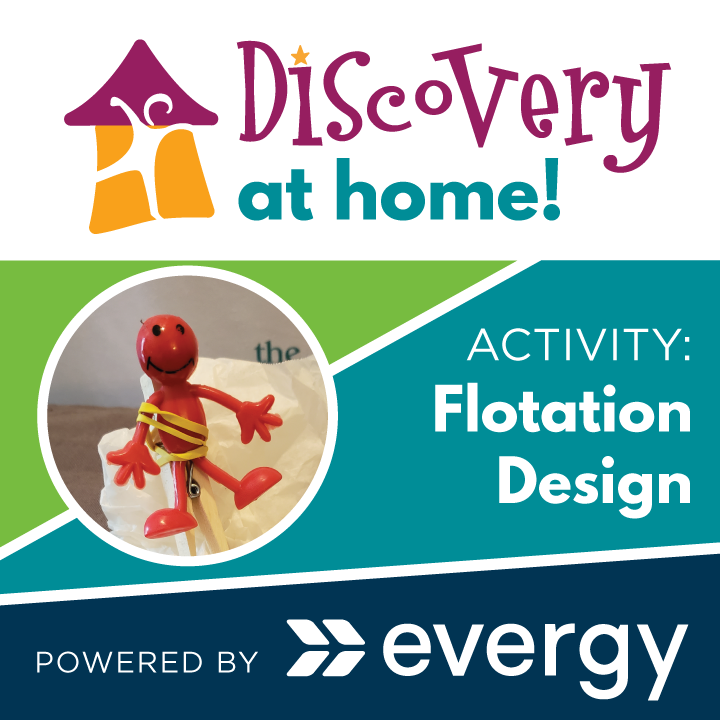What you need:
- Toys that can withstand water and sink in water.
- Recycled items (for example: popsicle sticks, cork board, rubber bands, bubble wrap, plastics, etc).
- Tape.
- Bucket.
- Water.
Directions:
- Fill a bucket half full with water.
- Use recycled materials to build a flotation device that will keep the toy from sinking.
- Test and make improvements to your flotation device as needed.
Ways to expand:
- Add toys to the challenge. How do you need to change your device so it holds more toys?
- Create a story to go along with the materials. Use a different toy as a villain and the hero toy has to find a way to cross the ocean to escape!
- Create two different types of devices: one that attaches to the toy and one that does not attach to the toy. What are the pros and cons of each type of device?
What kids learn:
- Density is what determines whether an object sinks or floats in water. If something is less dense than water, it floats. If something is more dense than water, it sinks.
- Basic engineering skills. Engineers solve problems with constraints, in this case, limited materials and air pressure. They learn to solve problems by using the engineering design process: asking questions, coming up with solutions, building, testing and improving.
- Fine motor skills. Kids practice using the small muscles in their hands later used for writing.
- Experimentation! When kids experiment, they're learning how to learn. Failure is an important part of experimenting, so let kids try things that won’t work. It’s how they figure things out!
Vocabulary:
- Density: The weight and size of an object. A fluffy pillow might be larger, but has less density than a brick. A crayon might be smaller, but has more density than a feather.
- Buoyancy: the ability or tendency to float in water, air or some other fluid.

